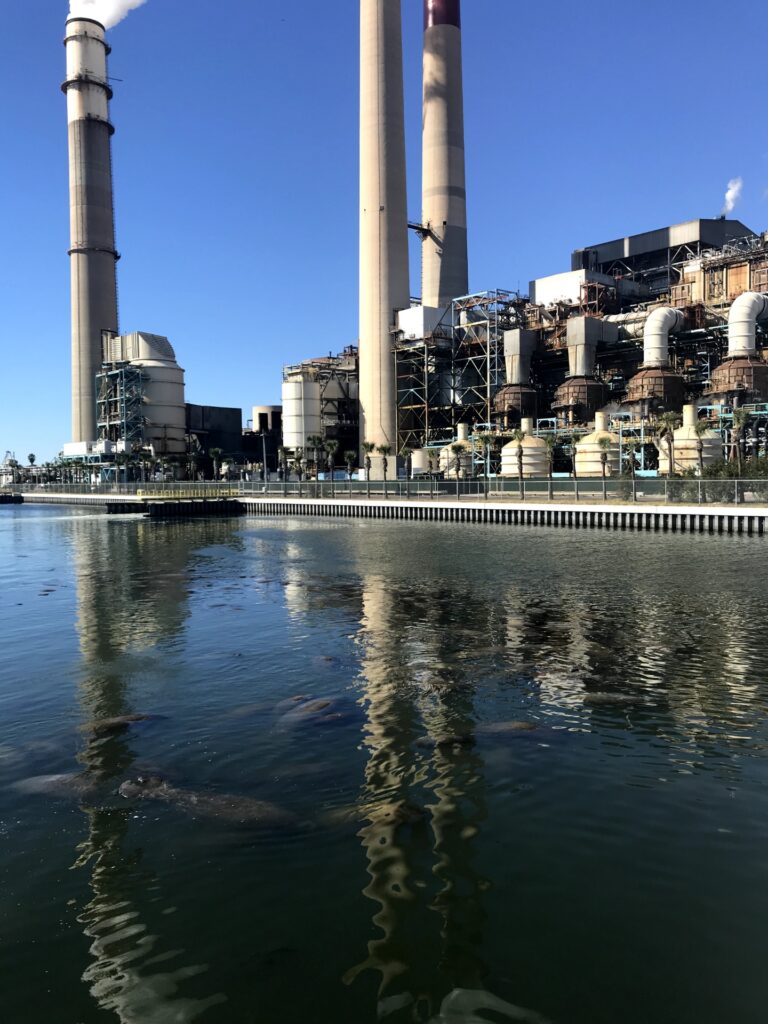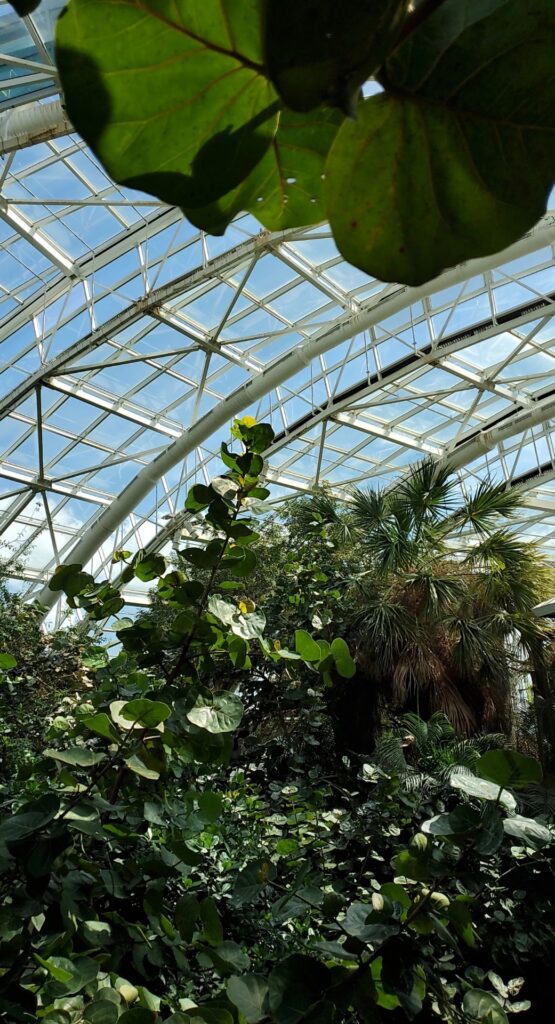Hi, Helping Ninjas!
Ever wondered what it is like being an aquarium educator?
I thought I would talk about what it’s like being an educator at a non-profit institution, like the Florida Aquarium, where I am currently working.
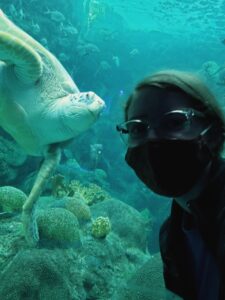
If you’re new to my story, my name is Sydney and I’m a marine biology graduate from Auburn University. Feel free to go and read my previous blog posts about my time at Dauphin Island Sea Lab and starting my marine biology career so that you aren’t confused about where I came from. This is an overdue continuation of my story!
I’m not going to go into too much detail about the Florida Aquarium to avoid repetition from my last blog post, but it’s an amazing place that cares a LOT about conservation of our oceans. On top of the main campus where they conduct tons of research on the different animals like sharks and jellies, they also have their Center for Conservation about 40 minutes south of the Aquarium in Apollo Beach where they have a sea turtle hospital and a huge coral greenhouse! They have been successful in breeding pillar corals in a controlled-setting (meaning not in the wild, where anything can happen) and actually help the Coral Restoration Foundation in outplanting corals in the wild in the Florida Keys, which means taking the corals that have been growing in a farm setting and planting them in the wild to create new reefs.
We do so much with coral, that we added a new interactive exhibit about it and created a commercial to air during the Super Bowl this year! (You might see a familiar face…)

I will add links below to the Florida Aquarium’s conservation mission, the Coral Restoration Foundation so you can read more about what they are doing in the Florida Keys, and the Aquarium’s Super Bowl commercial on YouTube.
The Center for Conservation is actually right down the road from the TECO Manatee Viewing Center (MVC), where I worked from November 2019 to March 2020. Now, this is a completely separate facility from the Florida Aquarium and is actually owned by the Tampa Electric Co., but the Aquarium has a stingray touch habitat there!
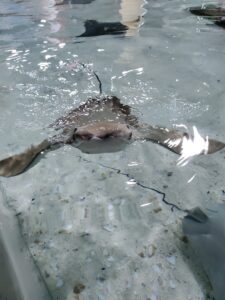
While I was there, I was an educator for the stingrays (and occasionally the wild manatees). MVC is built next to TECO’s Big Bend Power Plant, which is right on the Bay. Because it’s a partially hydroelectric power plant (meaning water is used to create electricity), a canal was built to release the heated water that was already used to create power. Manatees come here as they please to see warmth, so they built a center and a boardwalk to safely observe them without disturbing their peace. I’ll provide a link to the webcam at the power plant so you can actually see if there are manatees there now!
Manatee Viewing Center Webcam East
https://www.tampaelectric.com/company/mvc/webcameast/
Now some facts about manatees:
They have basically no body fat, which is what keeps mammals warm, so they have to migrate to warm waters during the winter time. Manatees can get cold stressed very easily when water temperatures are below 68 degrees Fahrenheit, so the canal at Big Bend Power Plant was a perfect spot for the manatees to take shelter. Because manatees are a vulnerable to threatened species, the Florida Fish and Wildlife Conservation Commission (FWC) had to declare that canal a manatee sanctuary, so no boats are allowed in the water there to protect them! Boats are one of the number one causes of manatee deaths because they are a very slow and curious animal; they like to investigate and get too close for comfort! Actually, when manatees are rescued, rehabilitated, and then released, FWC uses the scarring from boat propellors on their backs to identify them in the wild to make sure they’re still doing well. I’ll leave links for FWC and the Clearwater Marine Aquarium Rescue Team, who partner with FWC for manatee rescues and releases.
Going back to my actual job, I was a seasonal educator for the stingray touch habitat! It’s a free attraction in the Tampa Bay area from November to April every year, so I would meet vacationers from all over the world. A lot of these people have never even seen, much less touched, a stingray before, so it’s a very rewarding job. I love to be the person to introduce someone to a new animal and educate them on how wonderful the animal is. On top of educating with strange scientific terms, I also would have to modify how I spoke based on my audience, whether it was a group of elementary school kids, a group from a nursing home, or a family vacationing from another country. This is why the job of aquarium educator is also called an “interpreter!” I interpret information to guests based on their own backgrounds (from what I can gather in that short amount of time). It’s exhausting work, but that’s what makes it so interesting.
I took a short break from the Aquarium between March 2020 and November 2020 for a few reasons, but the main one was the pandemic. Because of this, the Aquarium wasn’t hiring any permanent positions, so I patiently waited until they posted that they were hiring. When they announced they were hiring again in November, I jumped on it! I’m so blessed that they offered me a permanent position back in the education department. I’ve been back for about 4 months now. In the beginning I was playing catchup and learning all of the new rules for the COVID-19 policies they put in place, but now I’m back in the swing of things! I’m learning new things and I’m able to talk to different, interesting guests every time I’m at work. Unlike MVC, the aquarium has multiple touch habitats and dozens of different exhibits to interpret, a wild dolphin cruise where you ride out into Tampa Bay and look for wildlife, and dozens of table activities and talks on different animal and conservation topics. I always have something new I can work on.
As for the touch habitats, I interpret how to touch stingrays, invertebrates (animals that have no bones) like anemones, sea stars, and urchins, and jellies (yes, you can touch a jellyfish at the Florida Aquarium)! What’s awesome about the system at the Aquarium is I’m never at the same spot for too long because we rotate every 30 minutes. Sometimes I’ll accidentally end up following the same family around the aquarium like I’m their own personal guide! But I actually love it when that happens because I can connect with those guests more than the ones that I only see for a couple of minutes at a time.
If this is the kind of job that you would love to do, I highly recommend it! If you aren’t at the age to have a job yet, don’t worry! There are plenty of other ways to get involved at your local aquarium, zoo, conservation center, etc. Always be on the look out for camps for over the summer and on breaks!
You are able to get your foot in the door to see if that’s something that interests you. Volunteering is another great way to get involved (and I know that the Helping Ninjas LOVES opportunities to do so)! Non-profits always post different clean-ups or other events on their websites and social media that you can register to participate in. Lots of aquarium and zoos also have volunteers that work behind the scenes with the animals and some that actually help interpret just like I do!
This is a great opportunity for high schoolers and college students so that you can see if it’s a path you would like to head down. If I had that opportunity when I was younger, I would have taken it in a heart-beat! It provides experience and looks awesome on a resume. Another one for college students is internships. While most are unpaid, they provide amazing experience and add lots to your skillset while you’re still taking classes.
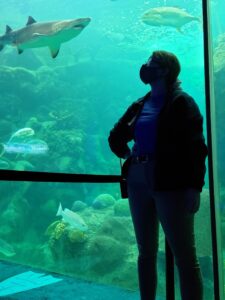
And I think that’s about it! Thank you for reading this far. I know that was a lot of information to take in. Be on the lookout for my next blog post in the future about my amazing career as an aquarium educator! Talk to you soon!
Written By:
Sydney Holpp, Helping Ninja, Tampa Bay Florida, Age 24
LINKS:
Florida Aquarium Conservation:
https://www.flaquarium.org/conservation
Coral Restoration Foundation:
https://www.coralrestoration.org/
Florida Fish and Wildlife Conservation Commission:
Clearwater Marine Aquarium Rescue Team:
https://mission.cmaquarium.org/what-we-do/rescue-rehab-release/



